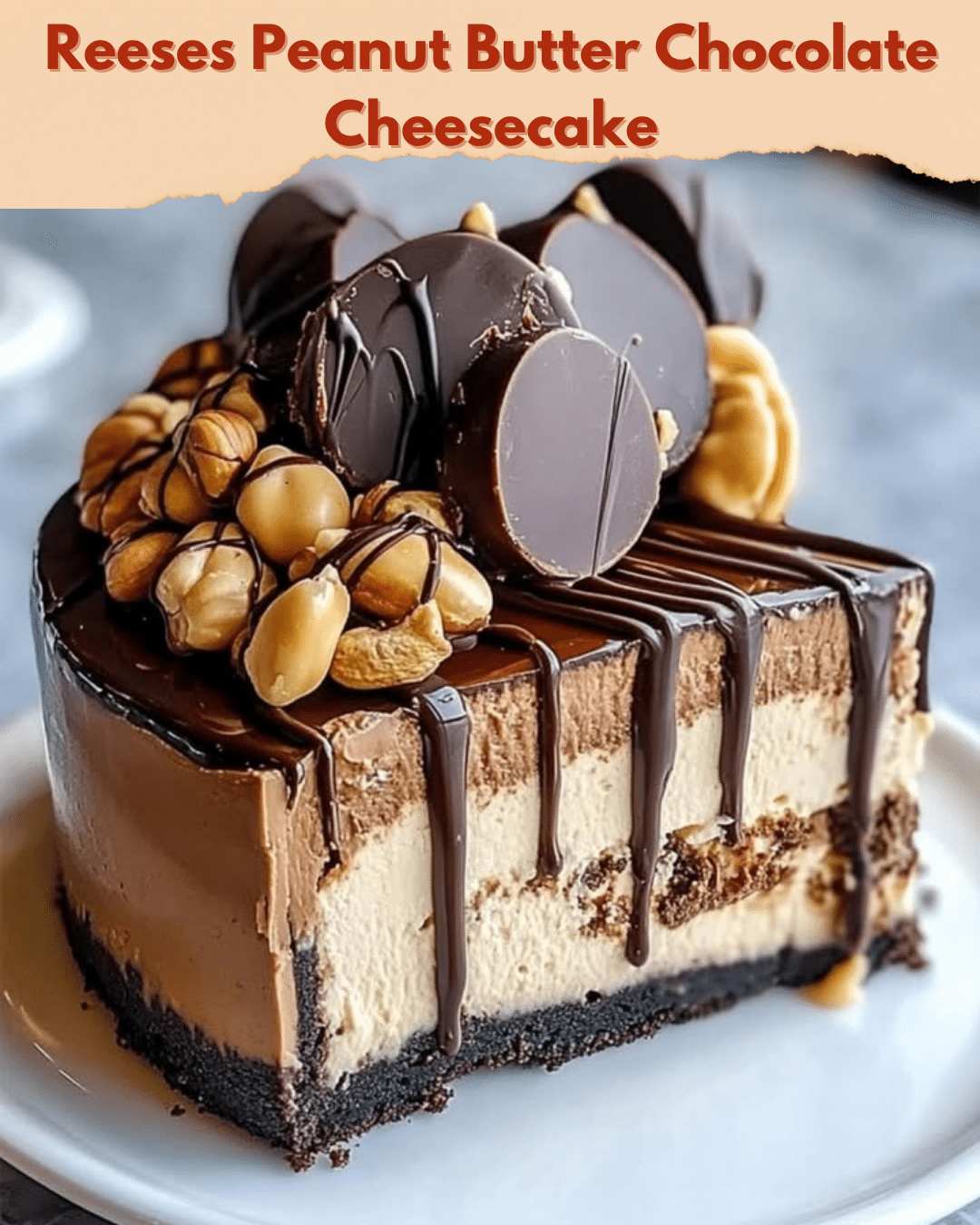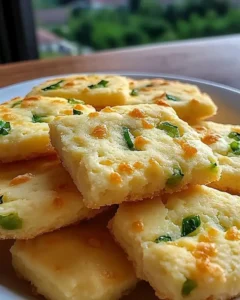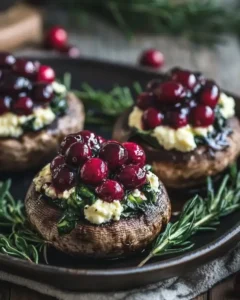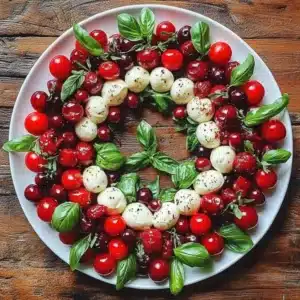Reese’s Peanut Butter Chocolate Cheesecake: An Indulgent Delight
Reese’s Peanut Butter Chocolate Cheesecake is a decadent dessert that combines the rich flavors of peanut butter and chocolate into a creamy cheesecake. This irresistible treat is perfect for those who can’t resist the iconic Reese’s combination. With a velvety peanut butter base topped with a smooth chocolate layer, this cheesecake will surely become a favorite at your gatherings. The sweet, nutty aroma will captivate your senses, while every bite delivers the perfect balance of flavors and textures.
Indulge in the ultimate dessert experience with this Reese’s Peanut Butter Chocolate Cheesecake. Imagine the delight as you slice through the creamy layers, with hints of salty peanut butter contrasting against the rich chocolate. The crunchy cookie crust at the bottom adds an exciting textural element that complements the silky cheesecake. Whether it’s a cozy date night, a festive celebration, or a casual family gathering, this cheesecake brings a touch of sophistication and joy to any occasion.
Quick Recipe Highlights
- Flavor Profile: The combination of sweet chocolate and nutty peanut butter creates a classic pairing, enhanced by a touch of vanilla and a hint of saltiness from the peanut butter.
- Texture: A smooth and creamy cheesecake texture is complemented by the crunch of the cookie crust and the silky chocolate topping.
- Aroma: Sweet and nutty notes dominate, with hints of vanilla and rich chocolate creating a warm, inviting scent.
- Visual Appeal: The contrast of the pale peanut butter filling against the dark chocolate topping, with an optional drizzle of peanut butter and sprinkled Reese’s pieces, creates a visually appealing dessert.
- Skill Level Needed: Intermediate. Requires some baking experience to manage the cheesecake texture and ensure even layers, though straightforward instructions make it accessible.
- Special Equipment: A springform pan is recommended for easy removal and a smooth, professional-looking cheesecake.
Recipe Overview
- Difficulty Level: Intermediate. This recipe involves creating a cheesecake and managing layers, which requires moderate baking skills but is achievable with clear steps and patience.
- Category: Dessert. Ideal for sweet cravings and special occasions where indulgence is the main attraction.
- Cuisine: American. This cheesecake leverages the iconic flavors of Reese’s, a staple in American candy culture, creating a dessert that feels familiar and beloved.
- Cost: Moderate. Uses a combination of fresh ingredients and pantry staples, making it an affordable option for an upscale dessert.
- Season: Year-round. Although particularly appealing in colder months due to its rich flavors, it remains a favorite regardless of season.
- Occasion: Perfect for celebrations, holidays, or any time you want to impress guests with a decadent homemade dessert.
Why You’ll Love This Recipe
This Reese’s Peanut Butter Chocolate Cheesecake combines the irresistible flavors of chocolate and peanut butter in a creamy dessert that’s perfect for any chocolate lover. The texture is velvety smooth, thanks to the rich cream cheese and peanut butter filling, which pairs perfectly with the rich chocolate layer on top. The contrasting flavors and textures make each bite a delight, while the aroma of chocolate and peanut butter fills your kitchen, enticing everyone to indulge.
The recipe is straightforward, making it convenient even for those who aren’t experts in the kitchen. With simple steps and readily available ingredients, it’s a breeze to whip up this show-stopping dessert that looks as impressive as it tastes. The cheesecake is perfect for entertaining, as it can be prepared ahead of time, allowing you to enjoy the occasion with your guests while still being able to present a homemade delight.
Nutritionally, this cheesecake is indulgent, but it provides the satisfaction of a homemade treat without the preservatives found in store-bought desserts. It’s packed with the flavor of real peanuts, offering a source of healthy fats and protein, while the rich chocolate satisfies any sweet tooth.
Socially, the Reese’s Peanut Butter Chocolate Cheesecake is a conversation starter; its rich flavors and beautiful presentation ensure that it’s the centerpiece of any dessert table. It brings people together and leaves a lasting impression, creating wonderful memories shared over slices of this delicious treat.
This cheesecake is not only delicious, but it’s also a cost-effective dessert option for entertaining. By using affordable ingredients commonly found in most supermarkets, you can create a gourmet-quality dessert at a fraction of the cost of purchasing similar items from a bakery. It’s an easy way to elevate a meal without breaking the bank.
Historical Background and Cultural Significance
The Reese’s Peanut Butter Chocolate Cheesecake draws inspiration from the beloved Reese’s Peanut Butter Cups, a candy that has been a favorite since its creation in the 1920s. Invented by H.B. Reese, this candy quickly became a staple in American culture, known for its perfect balance of peanut butter and chocolate.
Culturally, Reese’s has become synonymous with celebrations, often appearing in various forms at parties, holidays, and everyday indulgences. The cheesecake variation elevates this classic candy to a dessert of sophistication, capturing the hearts of those who cherish both peanut butter and chocolate.
Over the years, the cheesecake has evolved as bakers experiment with different flavors and textures, but the combination of chocolate and peanut butter remains a timeless favorite. Each variation brings a new twist to the beloved classic, allowing cultural traditions to blend with modern culinary techniques, resulting in delicious innovation.
Regionally, variations of this cheesecake can be found across the United States, often incorporating local ingredients or flavors to add a unique twist. Whether it’s a hint of sea salt from coastal areas or a spice infusion from southern regions, the Reese’s Peanut Butter Chocolate Cheesecake adapts beautifully, becoming a dessert that transcends regional boundaries.
Ingredient Deep Dive
Peanut Butter: The star ingredient in this cheesecake, peanut butter provides a rich, nutty flavor and a creamy texture that blends seamlessly with the cream cheese. It’s deeply rooted in American culinary tradition, favored for its versatility and comforting taste. When selecting peanut butter, choose a smooth variety for the best texture, and store it in a cool, dry place to maintain freshness.
Chocolate: Providing the decadent flavor that contrasts beautifully with the peanut butter, chocolate is a key player in this recipe. Use high-quality chocolate for the best results, ensuring a smooth and rich topping. Chocolate should be stored in a cool, dry place away from strong odors, and it can be substituted with dark or milk chocolate depending on preference.
Cream Cheese: Essential for the creamy base of the cheesecake, cream cheese offers a slight tangy flavor that balances the sweetness of the chocolate and peanut butter. Select full-fat cream cheese for the smoothest, richest cheesecake. Store unopened cream cheese in the refrigerator and bring it to room temperature before use for easy blending.
Cookie Crust: This element adds a delightful crunch to the cheesecake. Made from crushed cookies mixed with butter, it forms the base, providing structural integrity and flavor contrast. Choose cookies with a neutral or complementary flavor, such as graham crackers or chocolate wafers, for the best results.
Sugar: Providing sweetness throughout the cheesecake, sugar is balanced by the savory notes of peanut butter. It enhances flavors without overwhelming them. Select granulated sugar for the filling and powdered sugar if a smoother texture is needed in the topping.
Common Mistakes to Avoid
- Overmixing the batter can lead to a dense cheesecake. Mix just until combined to maintain a light texture.
- Baking at too high a temperature can cause the cheesecake to crack. Bake at a low temperature and use a water bath to ensure even cooking.
- Not cooling the cheesecake completely before refrigeration can result in a runny texture. Allow it to cool completely at room temperature before chilling.
- Skipping the water bath can cause an uneven bake. Make sure to wrap the pan in foil to prevent water from seeping in.
- Using low-quality chocolate can affect the flavor and texture of the topping. Choose a high-quality chocolate for the best results.
- Failing to bring ingredients to room temperature can lead to lumpy batter. Allow all ingredients to reach room temperature for a smooth mixture.
- Not measuring ingredients precisely can impact the balance of flavors and consistency. Use accurate measurements for best results.
- Rushing the chilling process can prevent the cheesecake from setting properly. Allow ample time for the cheesecake to chill thoroughly.
Essential Techniques
Mixing the Batter: Mixing the batter correctly is crucial for the perfect cheesecake texture. Avoid overmixing, which can incorporate too much air and lead to cracks. Instead, mix just until combined, scraping down the sides of the bowl to ensure even distribution of ingredients. The right consistency should be smooth and lump-free.
Water Bath Baking: A water bath helps ensure even baking and prevents cracking by providing gentle, moist heat. To set up a water bath, wrap the outside of the springform pan in a double layer of foil to prevent leaks, and place it in a larger pan. Pour boiling water into the larger pan until it reaches halfway up the sides of the springform pan.
Cooling and Setting: Proper cooling is essential to achieving a firm cheesecake that holds its shape. Allow the cheesecake to cool in the oven with the door ajar for an hour to prevent a sudden temperature change. Then cool completely at room temperature before refrigerating for at least four hours, or overnight, to ensure it sets perfectly.
Pro Tips for Perfect Reese’s Peanut Butter Chocolate Cheesecake
Use a springform pan for easy removal and beautiful presentation. Ensure it’s securely locked before filling.
Line the bottom of the pan with parchment paper to prevent sticking and make transferring the cheesecake to a serving platter effortless.
Wrap the springform pan in foil before placing it in the water bath to avoid water seeping into the crust.
For a glossy chocolate topping, melt the chocolate gently with a little heavy cream, stirring until smooth before pouring over the set cheesecake.
Allow ingredients like cream cheese and eggs to reach room temperature for a smooth batter, preventing lumps in the final cheesecake.
Achieve clean slices by warming your knife under hot water, wiping dry between cuts for a polished presentation every time.
Variations and Adaptations
Regional Variations: Add a touch of local flair by incorporating regional ingredients, such as cinnamon for a hint of spice, or sea salt flakes for a flavor boost.
Seasonal Adaptations: For a festive twist, sprinkle crushed peppermint candies over the chocolate layer during the holiday season for a minty freshness that pairs beautifully with chocolate.
Dietary Modifications: Make a gluten-free version by using crushed gluten-free cookies for the crust. Ensure all other ingredients are certified gluten-free before proceeding.
Flavor Variations: Experiment with different nut butters, such as almond or cashew, for a unique twist on the traditional peanut butter flavor. Adjust sugar levels as needed to complement the flavor profile.
Texture Modifications: Add chopped peanuts or Reese’s Pieces to the filling for additional crunch and texture contrast within the creamy cheesecake.
Presentation Alternatives: Create individual cheesecakes by using a muffin tin lined with cupcake liners. This also allows for easier portion control and a charming presentation.
Serving and Presentation Guide
Plating Techniques: Serve slices of the cheesecake on decorative dessert plates, ensuring the beautiful layers of peanut butter filling and chocolate topping are clearly visible.
Garnishing Ideas: Top with a drizzle of melted peanut butter or chocolate ganache and sprinkle crushed cookies or Reese’s Pieces for a visually appealing finish that enhances flavor and texture.
Traditional Accompaniments: Pair with a dollop of whipped cream or a scoop of vanilla ice cream for a classic combination that adds creaminess and contrast to the rich cheesecake.
Modern Serving Suggestions: For a contemporary twist, serve with a side of fruit coulis or a berry compote, adding a burst of color and a touch of tartness to balance the dessert.
Temperature Considerations: Serve the cheesecake chilled for the best texture, allowing the flavors to develop fully. Remove from the refrigerator about 15 minutes before serving to let it soften slightly.
Portion Control Tips: Use a hot, clean knife to slice the cheesecake into neat, uniform portions, ensuring each slice showcases the layered beauty of the dessert.
Wine and Beverage Pairing
Wine Pairings: Pair with a rich port wine or a late-harvest Riesling, whose sweetness complements the chocolate and cuts through the cheesecake’s richness for a balanced finish.
Non-Alcoholic Alternatives: Try serving with a tall glass of cold milk or a rich hot chocolate for a comforting, kid-friendly pairing that enhances the dessert’s flavors.
Coffee Pairings: A bold espresso or cappuccino complements the sweet, nutty notes of the cheesecake, adding an aromatic contrast that enhances the culinary experience.
Temperature Considerations: Serve beverages slightly warmed or at room temperature to enhance the creaminess of the cheesecake without overwhelming it.
Serving Suggestions: Present drinks in clear glasses or elegant cups to showcase the rich colors of the wine or coffee, providing a visual delight alongside the dessert.
Storage and Shelf Life
Storage Methods: Store the cheesecake in the refrigerator, covered loosely with plastic wrap or foil, to maintain its freshness and prevent it from absorbing refrigerator odors.
Temperature Requirements: Keep the cheesecake chilled at or below 40°F to ensure the cream cheese stays safely edible and maintains its smooth texture.
Container Recommendations: If transferring to another container, choose an airtight container to prevent drying out and preserve the cheesecake’s rich taste and texture.
Signs of Spoilage: Check for any off smells, discoloration, or a rubbery texture, which indicate spoilage, and discard if any are present.
Reheating Instructions: Allow refrigerated slices to sit at room temperature for about 15 minutes before serving to enjoy the cheesecake at its best texture and flavor.
Freezing Guidelines: For longer storage, wrap the cheesecake tightly in plastic wrap and aluminum foil, then freeze for up to a month. Thaw overnight in the refrigerator before serving.
Make Ahead Strategies
Prep Timeline: Prepare the cheesecake a day ahead, allowing ample time for chilling and setting. This reduces stress on the serving day and enhances texture and flavor.
Storage Between Steps: Wrap the baked and cooled cheesecake (without toppings) tightly in plastic wrap to prevent drying out while chilling overnight before applying the final topping.
Quality Impact Assessment: Flavor and texture improve with time, as the layers meld and the crust softens slightly, making it an ideal make-ahead dessert without quality loss.
Assembly Tips: Apply the chocolate topping and garnishes a few hours before serving, ensuring they remain fresh and visually appealing.
Reheating Guidelines: No reheating is needed for this dessert; simply remove from the refrigerator about 15 minutes before serving to ensure ideal texture.
Fresh Element Additions: For a refreshing contrast, add fresh fruit or nuts just before serving to maintain crisp texture and vibrant flavors.
Scaling Instructions
Halving the Recipe: To make a smaller cheesecake, divide all ingredient quantities by two and use a smaller springform pan, adjusting baking time as needed based on thickness.
Doubling or Tripling: For larger gatherings, double or triple the recipe, maintaining ingredient proportions. Ensure your oven can accommodate multiple pans and adjust baking time slightly.
Equipment Adjustments: Use appropriately sized pans when scaling the recipe. A larger pan may require a slightly shorter baking time due to increased surface area.
Timing Modifications: Monitor the cheesecake closely, checking doneness with a jiggle test or a thermometer to ensure it reaches the creamy but set stage.
Storage Considerations: If serving leftovers, wrap individual slices tightly in plastic to prevent drying and keep flavors intact for later enjoyment.
Nutritional Deep Dive
Macro Breakdown: Each serving provides a rich source of carbohydrates from sugars and crust, fats from cream cheese and peanut butter, and proteins from dairy and nuts.
Micronutrient Analysis: While indulgent, the cheesecake offers some calcium from dairy and vitamin E from peanuts, contributing to dietary intake in a delicious manner.
Health Benefits: Real peanut butter offers healthy monounsaturated fats, essential for heart health, while moderation allows for enjoyment without excessive caloric intake.
Dietary Considerations: Ideal for special occasions within a balanced diet, this cheesecake satisfies sweet cravings while being mindful of portion sizes and frequency.
Portion Analysis: A standard slice offers satisfaction from rich flavors and textures, allowing for enjoyment without the need for oversized servings.
Weight Management Tips: Pair with a side of fresh fruit or a light salad for a balanced meal, ensuring portion control and meeting dietary goals without sacrifice.
Dietary Adaptations
Gluten-Free: Substitute gluten-free cookies for the crust to accommodate gluten sensitivities without altering flavor or satisfaction.
Dairy-Free: Use dairy-free cream cheese and chocolate alternatives, ensuring all ingredients are lactose-free to suit dietary needs of individuals avoiding dairy.
Vegan: Replace dairy ingredients with vegan alternatives such as cashew cream cheese and choose a plant-based chocolate for a satisfying dessert.
Low-Carb: Opt for sugar substitutes like erythritol and a nut-based or almond flour crust to significantly reduce carbohydrate content while maintaining flavor.
Keto: Similar to low-carb adaptation, ensure high-fat ingredients align with dietary requirements, selecting keto-friendly sweeteners and flour alternatives.
Paleo: Use almond butter instead of peanut butter and choose honey or maple syrup for natural sweetness to align with paleo diet principles.
Low-FODMAP: Opt for lactose-free dairy products and ensure chocolate used is low in FODMAPs for a tummy-friendly version.
Troubleshooting Guide
Texture Issues: If your cheesecake is runny, ensure it has baked long enough or chilled sufficiently. A wobbly center sets fully upon cooling.
Flavor Balance: Overpowering peanut butter or chocolate can be adjusted by taste during mixing. Consider adding a touch more vanilla to balance.
Temperature Problems: Avoid sudden temperature changes post-baking to prevent cracks. Let it cool gradually in the oven with the door ajar before refrigerating.
Equipment Challenges: A loose springform pan may lead to leaks. Double-check it is properly assembled, and use a water-resistant wrap as a precaution.
Ingredient Substitutions: Substitute thoughtfully, keeping flavor and texture in mind. Always test small quantities first to ensure satisfaction.
Timing Concerns: Allow adequate mixing time for each layer, ensuring smooth incorporation. Pause and scrape the bowl to avoid lumps or uneven distribution.
Recipe Success Stories
Community Feedback: Bakers love the simplicity and rich flavor, often sharing stories of how this cheesecake has become a family favorite at holiday gatherings.
Variation Successes: Many have crafted beautiful variations by layering different chocolate types or incorporating chopped candies for added indulgence.
Adaptation Stories: Dairy and gluten-free adaptations receive high praise for allowing individuals with dietary restrictions to enjoy this classic indulgence with a satisfying twist.
Reader Suggestions: Readers recommend a light dusting of cocoa powder for a sophisticated touch or adding a splash of coffee to the chocolate layer for deeper flavor.
Photography Tips: Capture the details by slicing cleanly and showcasing the layers, using natural light to highlight the sheen of the chocolate and the texture contrast between layers.
Frequently Asked Questions
What’s the best chocolate type for the topping? Semi-sweet or dark chocolate balances the sweetness of the cheesecake, providing a deeper chocolate flavor.
How long will leftovers stay fresh in the refrigerator? Well-wrapped, your cheesecake remains fresh for up to five days, maintaining quality and flavor.
Can I freeze individual slices? Absolutely! Wrap each slice in plastic before storing them in a freezer-safe container for up to a month.
Will a regular cake pan work instead of a springform? While possible, a springform allows easier removal without damaging the cheesecake’s sides.
How can I prevent cracking? Use a water bath and avoid over-baking. Gradual cooling and proper mixing to incorporate minimal air also help prevent this issue.
Is it okay to use reduced-fat cream cheese? Full-fat is preferable for texture, but reduced-fat works if you’re mindful of adjustments to maintain structural properties.
Can I add fruit toppings? Absolutely. Fresh berries or a fruit sauce can add a refreshing contrast to the rich flavors of the cheesecake.
What’s the trick for cutting neat slices? Use a hot, clean knife, hovering over hot water, and wiping between cuts for pristine presentation.
Can I make this without a water bath? A water bath ensures even cooking, but careful baking and cooling can yield good results without it, albeit with increased risk of cracks.
Additional Resources
Related Recipes: Try other decadent cheesecakes like New York Style or White Chocolate Raspberry for a range of flavors that complement your dessert menu.
Technique Guides: Learn about the importance of water baths and mastering cheesecake texture with detailed culinary technique articles available on our blog.
Ingredient Information: Explore more about your favorite ingredients such as chocolate and peanut butter, their sourcing, and their role in cooking and baking.
Equipment Recommendations: Discover our guide to essential baking equipment for perfect results, ensuring you have the right tools for every dessert you create.
Seasonal Variations: Check out our seasonal baking guide for ideas on how to incorporate fresh, seasonal ingredients into your favorite cheesecake recipes for a vibrant touch.
Print
Reese’s Peanut Butter Chocolate Cheesecake
Description
A rich and creamy cheesecake that combines the beloved flavors of Reese’s peanut butter cups with chocolate for a decadent dessert.
Ingredients
For the Crust:
- 1 1/2 cups chocolate graham cracker crumbs
- 1/4 cup melted butter
- 4 (8 oz) packages cream cheese, softened
- 1 cup sugar
- 1 teaspoon vanilla extract
- 4 large eggs
- 1 cup sour cream
- 1 cup creamy peanut butter
- 1 cup semi-sweet chocolate chips
- 1/4 cup heavy cream
- Reese’s peanut butter cups (chopped, for garnish)
Instructions
1. Prepare the Crust:
- Preheat the oven to 325°F (160°C). Grease a 9-inch springform pan.
- Combine the chocolate graham cracker crumbs and melted butter in a bowl. Press mixture into the bottom of the prepared pan to form the crust and set aside.
- In a large bowl, beat the cream cheese and sugar until smooth. Add vanilla extract and eggs, one at a time, mixing on low speed until just combined. Stir in the sour cream and peanut butter until smooth.
- Pour the filling over the crust in the springform pan. Bake for 10 minutes, then reduce the temperature to 250°F (120°C) and bake for an additional 45 minutes or until the center is set.
- Remove from oven and run a sharp knife around the edge to loosen cheesecake. Cool on a wire rack for 10 minutes. Cover with plastic wrap and refrigerate for at least 4 hours or overnight.
- For the topping, melt the chocolate chips with heavy cream in a microwave-safe bowl in 30-second intervals, stirring until smooth. Spread over the cheesecake.
- Garnish with chopped Reese’s peanut butter cups before serving.
Notes
You can customize the seasonings to taste.





